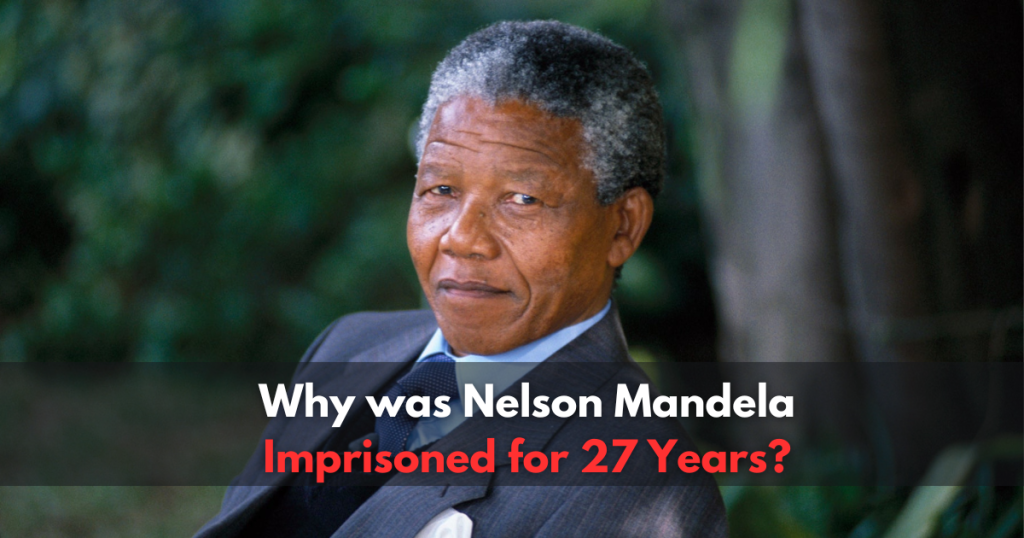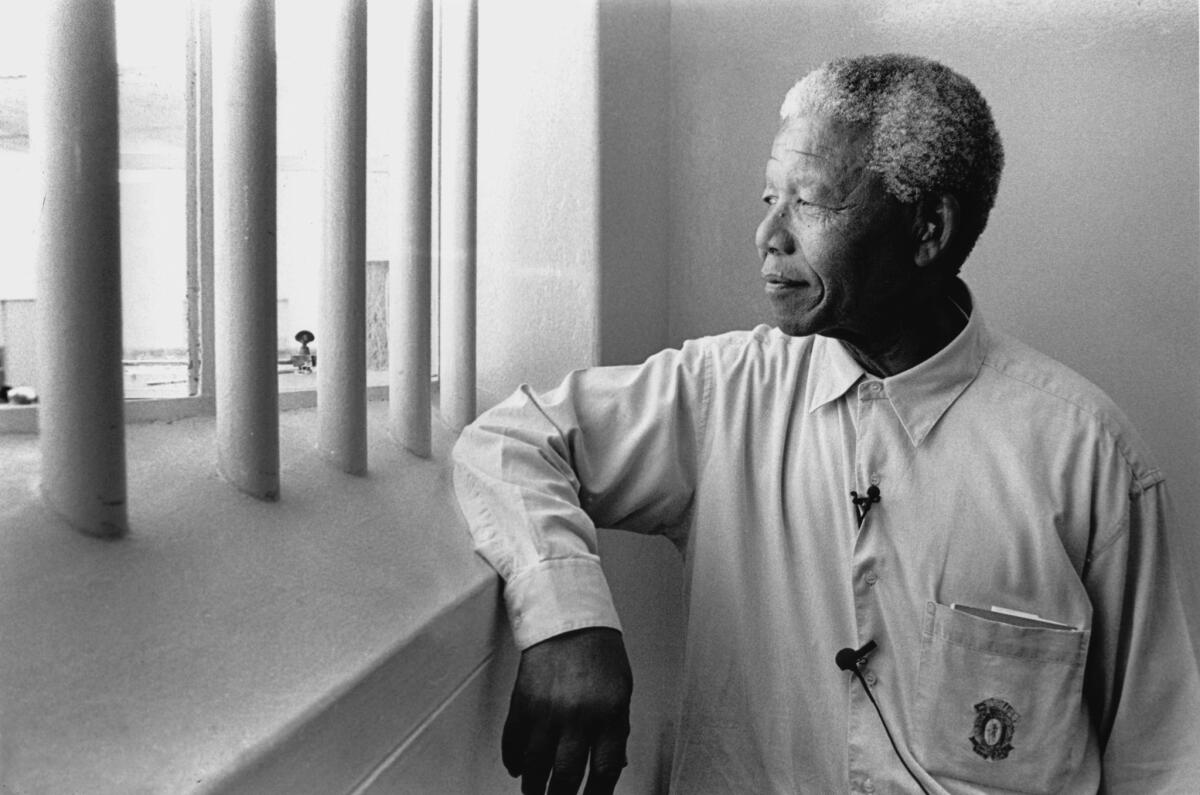Nelson Mandela is a global icon of peace and resilience. He endured 27 years in prison for fighting apartheid in South Africa. His imprisonment symbolizes the brutal repression of anti-apartheid foes. It also shows the strength of a man who would lead his nation to freedom. This article will explore the causes of Mandela’s long imprisonment. It will also cover his experiences during those years and the legacy of his fight for justice. This article will show the impact of Mandela’s life. It will discuss the importance of his nearly three-decade confinement.
The Apartheid system in South Africa

Apartheid was a system of racial segregation and discrimination. It was enforced by the South African government from 1948 to 1994. This oppressive system denied basic rights to non-white citizens. It segregated communities and enforced discrimination in education, healthcare, jobs, and housing.
The National Party, which came to power in 1948, implemented apartheid. It aimed to ensure white supremacy and control the economy. The majority, Black South Africans, faced severe restrictions on movement, association, and politics. The racist government oppressed people, sparking resistance to end apartheid.
Nelson Mandela’s early life and political awakening.

Nelson Rolihlahla Mandela was born on July 18, 1918, in the village of Mvezo in the Eastern Cape of South Africa. He belonged to the Thembu royal family and was raised with a strong sense of justice and leadership. Mandela attended the University of Fort Hare. There, he began to cultivate an interest in politics. His young adult experiences showed him the injustices faced by Black South Africans. This fueled his desire for social and political change.
In the early 1940s, Mandela moved to Johannesburg. There, he joined the African National Congress (ANC). It is a group that fights for black South Africans’ rights and freedoms. His time in Johannesburg strengthened his resolve to end apartheid and achieve equality for all.
Founding of the African National Congress Youth League (ANCYL)

In 1944, Mandela, Walter Sisulu, and Oliver Tambo founded the African National Congress Youth League (ANCYL) with young leaders. The ANCYL wanted a bolder fight against apartheid. It advocated for civil disobedience, strikes, and boycotts to challenge unfair laws. The Youth League’s influence pushed the ANC to take a more active stance. This began a movement to challenge apartheid head-on.
The ANCYL’s principles were about African nationalism. They urged black South Africans to reclaim their country from racial oppression. Mandela’s work with the Youth League made him a key leader in the anti-apartheid movement.
The Defiance Campaign and Growing Activism

In 1952, Mandela helped lead the Defiance Campaign. It was a nonviolent protest by the ANC and the Indian Congress against apartheid. The campaign involved civil disobedience. Volunteers broke apartheid laws on purpose. This led to thousands of arrests. Despite repression, the campaign raised global awareness of South Africa’s racial policies. It also boosted Mandela’s reputation as a key anti-apartheid figure.
Despite its peaceful nature, the South African government cracked down on activists. It imposed harsher laws in response to the campaign. Mandela was among those targeted. He faced various restrictions, including a ban on attending public meetings. His resolve to end apartheid only strengthened. So, he sought new ways to resist.
Shift Toward Armed Resistance and Formation of Umkhonto we Sizwe
After years of peaceful protests, they faced violent repression. So, Mandela and his comrades began to doubt that nonviolence could end apartheid. In 1961, Mandela co-founded Umkhonto we Sizwe (MK), meaning “Spear of the Nation,” the armed wing of the ANC. The MK aimed to sabotage government infrastructure to undermine the apartheid regime without killing anyone. This shift marked a big rise in the anti-apartheid movement. Mandela openly called for armed resistance as a last resort.
The government saw MK’s activities as terrorism. Mandela became one of South Africa’s most-wanted men. He went underground, operating secretly to avoid arrest while coordinating MK’s activities.
Arrest and the Rivonia Trial
In 1962, authorities arrested Mandela for leaving the country illegally and inciting strikes. He was sentenced to five years in prison. While he was incarcerated, the police found an MK safe house in Rivonia, near Johannesburg. It contained plans for a guerrilla war against the apartheid regime. Mandela and other ANC leaders were charged with sabotage and conspiracy. They planned a violent revolution.
At the 1963 Rivonia Trial, Mandela gave a famous speech. He admitted his role in the fight against apartheid. He declared he was willing to die for freedom and he said, “I have fought against white domination, and against black domination.” I have cherished the ideal of a democratic and free society… it is an ideal for which I am prepared to die.” In 1964, Mandela and seven others were sentenced to life imprisonment.
Mandela’s Life in Prison: Robben Island and Beyond
Mandela spent 18 of his 27 years in prison on Robben Island, located off the coast of Cape Town. The prison conditions were harsh. Mandela and other political prisoners endured hard labor, limited contact, and few visits. Despite these adversities, Mandela kept his dignity. He educated himself and his fellow prisoners. He also fostered a spirit of resilience and unity.
Mandela was later transferred to Pollsmoor, then to Victor Verster Prison. His conditions improved slightly. During his imprisonment, Mandela’s name became linked to the anti-apartheid movement. He inspired millions to support South African liberation.
Global Pressure and the Fight for Mandela’s Release
As Mandela remained in prison, international pressure mounted on the South African government. Worldwide, activists organized protests, boycotts, and sanctions against South Africa, demanding Mandela’s release. “Free Nelson Mandela” became a rallying cry for the anti-apartheid movement.
The South African government, facing economic strain and isolation, eventually negotiated. By the late 1980s, President F.W. de Klerk saw apartheid was unsustainable. He began to dismantle it, including talks to release political prisoners.
Mandela’s release and the path to democracy
On February 11, 1990, Nelson Mandela was finally released from prison. It was a historic moment for South Africa and the world. Mandela’s release symbolized the beginning of the end for apartheid. After his release, Mandela negotiated with the government. He wanted a peaceful transition to a democratic South Africa.
In 1994, Mandela achieved his life’s goal. He ended apartheid and established a democratic South Africa. He became the country’s first Black president and he ushered in a new era of equality and reconciliation.
Legacy of Nelson Mandela’s Imprisonment

Nelson Mandela’s 27-year imprisonment shows his commitment to justice and equality. His endurance and leadership sparked a movement. It condemned racism and celebrated human rights. Mandela’s ability to forgive his oppressors set a strong example. He stressed reconciliation over retribution. This was a lesson in peace and social harmony.
Mandela’s legacy endures as a symbol of resilience, sacrifice, and the power of unity. His life shows the need to fight injustice. We must work for a world where freedom and dignity are universal rights.
Conclusion
Nelson Mandela’s 27-year imprisonment was key in the fight against apartheid. It showed the oppressive South African government and a leader’s resilience. He would not be broken. Mandela’s story inspires those fighting oppression and promoting equality worldwide. His legacy lives on, not only in South Africa but also as a beacon of hope and justice for all humanity.



